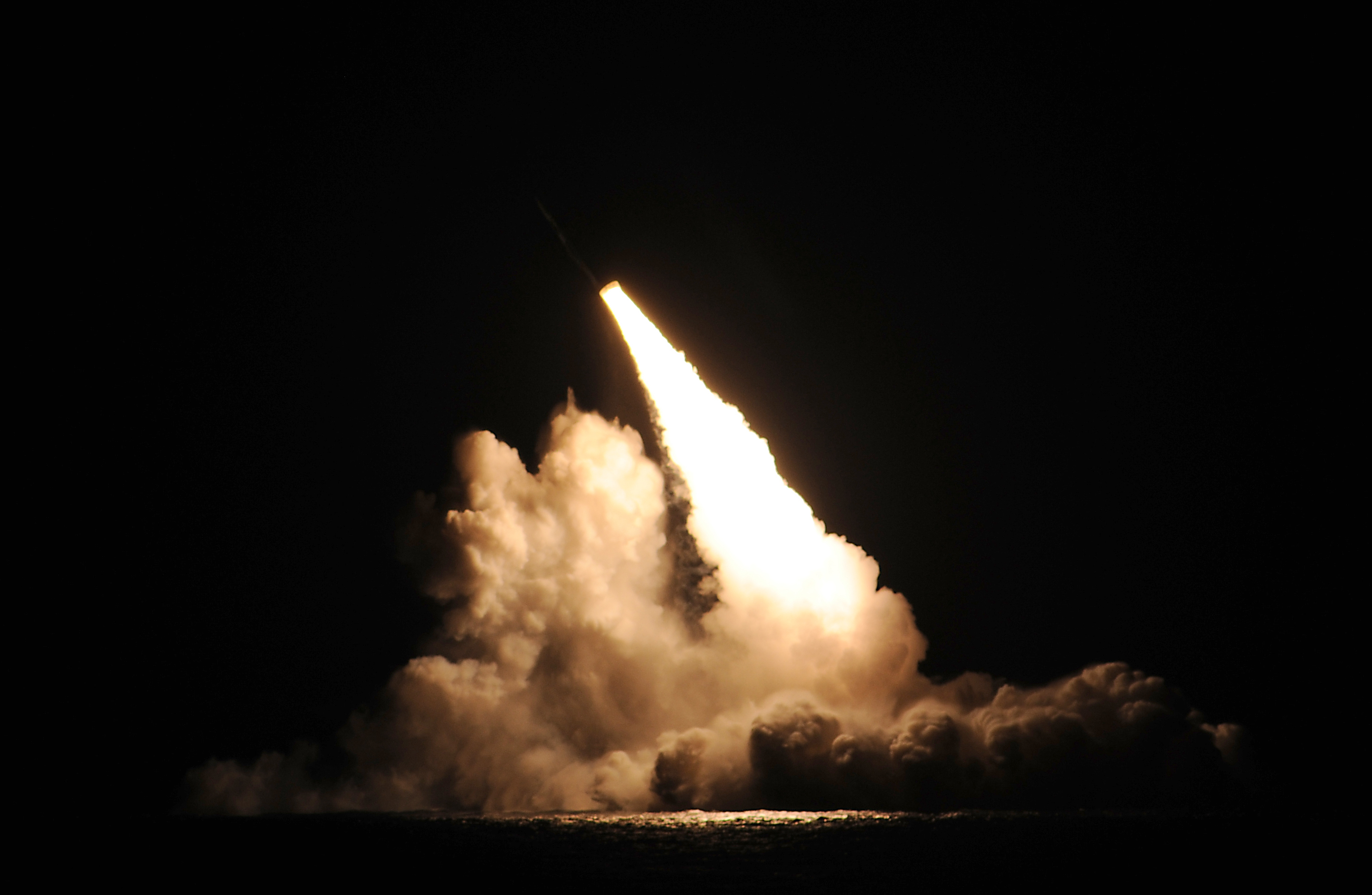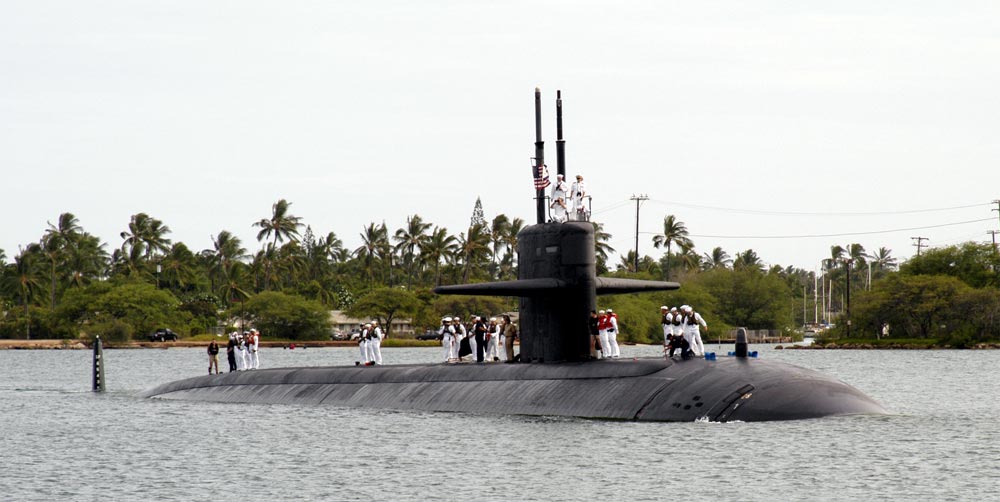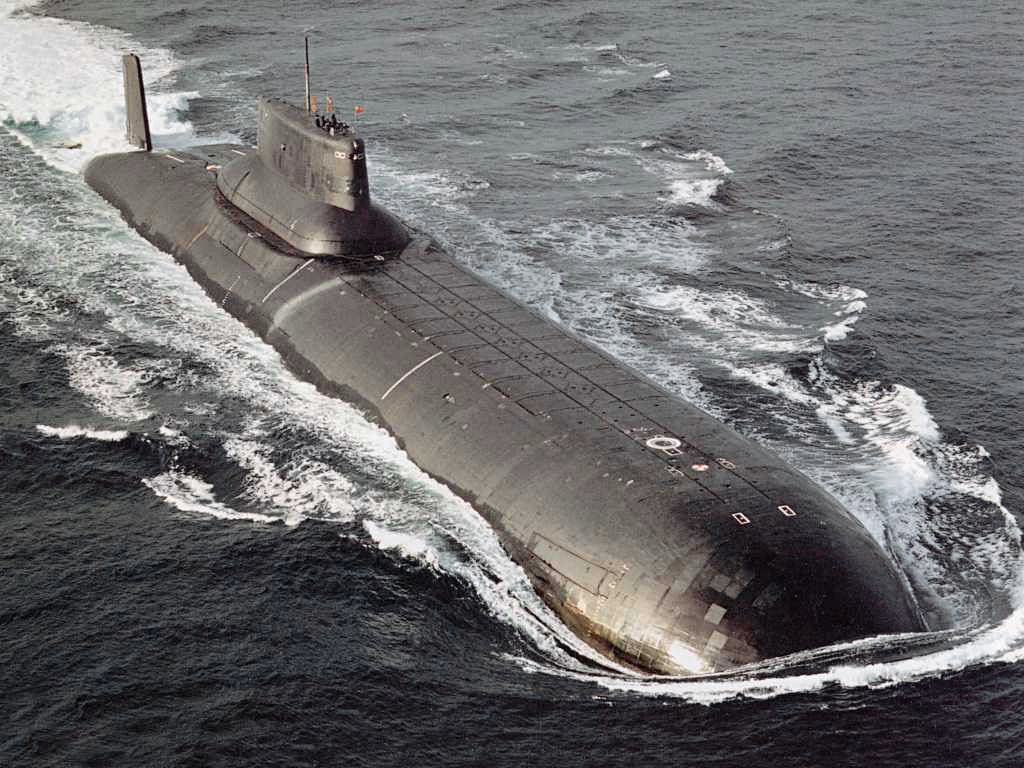|
Bangor Trident Base
Naval Submarine Base Bangor is a former submarine base of the United States Navy that was merged with Naval Station Bremerton into Naval Base Kitsap in 2004. History The Naval Support Base Bangor's naval history began in 1942 when it became a site for shipping ammunition to the Pacific Theater of Operations during World War II. For an expansion and to establish a permanent naval base, the U.S. Navy purchased 7,676 acres (3100 hectares) of land on the Hood Canal near the town of Bangor, Washington for approximately $18.7 million. The U.S. Naval ammunition magazine was established on June 5, 1944, for its construction, and it began operations in January 1945. Beginning in World War II, and through the Korean War and the Vietnam War, until January 1973, the Bangor Annex continued its service as a U.S. Navy Ammunition Depot responsible for shipping conventional weapons abroad. In 1973, the Navy announced the selection of the Bangor base as the home port for the first squadron of ... [...More Info...] [...Related Items...] OR: [Wikipedia] [Google] [Baidu] |
United States Navy
The United States Navy (USN) is the maritime service branch of the United States Armed Forces and one of the eight uniformed services of the United States. It is the largest and most powerful navy in the world, with the estimated tonnage of its active battle fleet alone exceeding the next 13 navies combined, including 11 allies or partner nations of the United States as of 2015. It has the highest combined battle fleet tonnage (4,635,628 tonnes as of 2019) and the world's largest aircraft carrier fleet, with eleven in service, two new carriers under construction, and five other carriers planned. With 336,978 personnel on active duty and 101,583 in the Ready Reserve, the United States Navy is the third largest of the United States military service branches in terms of personnel. It has 290 deployable combat vessels and more than 2,623 operational aircraft . The United States Navy traces its origins to the Continental Navy, which was established during the American Revo ... [...More Info...] [...Related Items...] OR: [Wikipedia] [Google] [Baidu] |
UGM-133 Trident II
The UGM-133A Trident II, or Trident D5 is a submarine-launched ballistic missile (SLBM), built by Lockheed Martin Space in Sunnyvale, California, and deployed with the US Navy, American and Royal Navy, British navies. It was first deployed in March 1990, and remains in service. The Trident II Strategic Weapons System is an improved SLBM with greater accuracy, payload, and range than the earlier UGM-96 Trident I, Trident C-4. It is a key element of the U.S. strategic nuclear triad and strengthens U.S. deterrence theory, strategic deterrence. The Trident II is considered to be a durable sea-based system capable of engaging many targets. It has payload flexibility that can accommodate various treaty requirements, such as New START. The Trident II's increased payload allows nuclear deterrence to be accomplished with fewer submarines, and its high accuracy—approaching that of intercontinental ballistic missile, land-based missiles—enables it to be used as a pre-emptive nuclear str ... [...More Info...] [...Related Items...] OR: [Wikipedia] [Google] [Baidu] |
Naval Installations In Washington (state)
A navy, naval force, or maritime force is the branch of a nation's armed forces principally designated for naval warfare, naval and amphibious warfare; namely, lake-borne, riverine, littoral zone, littoral, or ocean-borne combat operations and related functions. It includes anything conducted by surface Naval ship, ships, amphibious warfare, amphibious ships, submarines, and seaborne naval aviation, aviation, as well as ancillary support, communications, training, and other fields. The strategic offensive role of a navy is Power projection, projection of force into areas beyond a country's shores (for example, to protect Sea lane, sea-lanes, deter or confront piracy, ferry troops, or attack other navies, ports, or shore installations). The strategic defensive purpose of a navy is to frustrate seaborne projection-of-force by enemies. The strategic task of the navy also may incorporate nuclear deterrence by use of submarine-launched ballistic missiles. Naval operations can be broa ... [...More Info...] [...Related Items...] OR: [Wikipedia] [Google] [Baidu] |
Buildings And Structures In Kitsap County, Washington
A building, or edifice, is an enclosed structure with a roof and walls standing more or less permanently in one place, such as a house or factory (although there's also portable buildings). Buildings come in a variety of sizes, shapes, and functions, and have been adapted throughout history for a wide number of factors, from building materials available, to weather conditions, land prices, ground conditions, specific uses, prestige, and aesthetic reasons. To better understand the term ''building'' compare the list of nonbuilding structures. Buildings serve several societal needs – primarily as shelter from weather, security, living space, privacy, to store belongings, and to comfortably live and work. A building as a shelter represents a physical division of the human habitat (a place of comfort and safety) and the ''outside'' (a place that at times may be harsh and harmful). Ever since the first cave paintings, buildings have also become objects or canvasses of much artisti ... [...More Info...] [...Related Items...] OR: [Wikipedia] [Google] [Baidu] |
World War II United States Merchant Navy
World War II United States Merchant Navy was the largest civilian Navy in the world, which operated during World War II. With the United States fighting a world war in all the world oceans, the demand for cargo and fuel was very high. Cargo and fuel was needed around the world for the United States Navy, United States Army, United States Marine Corps, United States Army Air Forces, United States Coast Guard and the support of the allied nations of the United States. American steamship companies chartered ships from the Maritime Commission and War Shipping Administration to meet the demand. Many United States Merchant Marine ships were newly built in the Emergency Shipbuilding Program, other ships were older World War I ships that were put back in service, or private ships acquired under Emergency war requisitions. The Merchant Navy operated in the Pacific War and European war. Over 200 US Merchant ships took part in the D-day Normandy landings. To make a Normandy breakwater Ha ... [...More Info...] [...Related Items...] OR: [Wikipedia] [Google] [Baidu] |
United States Navy Submarine Bases
The United States Navy built permanent and temporary submarine bases around the world to maintain its fleet of submarines and serve the needs of the crews. Submarine bases are military bases that offer good fleet anchorage and are designed to refuel and resupply submarines. The peak number of US submarine bases was during World War II, as the submarine was well suited for fighting in the vast Pacific War, often in enemy waters. Many of the United States submarine bases were closed after the war. History The need for US submarine bases was created with the completion of the first submarine launched in May 1897. The USS ''Holland'' was acquired by the Navy 11 April 1900. On 16 October 1900, the USS ''Holland'' departed for her first port, United States Naval Academy at Annapolis, Maryland for crew training. USS ''Holland'' had a crew of one officer, and five enlisted men. Annapolis being a training center was not designated a submarine base, though the USS ''Holland'' was statio ... [...More Info...] [...Related Items...] OR: [Wikipedia] [Google] [Baidu] |
Maritime Force Protection Unit
A Maritime Force Protection Unit (MFPU) is a U.S. Coast Guard unit type tasked with the protection of U.S. Navy ballistic missile submarines (SSBN) while surfaced and transiting U.S. territorial waters to and from their patrol stations. Maritime Force Protection Units have approximately 150 personnel and are "single-mission" units, meaning they have no other responsibilities other than the defense of SSBNs. As of 2017, there were two Maritime Force Protection units, both of which were activated in 2007. The first, Maritime Force Protection Unit Kings Bay, is based at Naval Submarine Base Kings Bay; a second, Maritime Force Protection Unit Bangor, is based at Naval Submarine Base Bangor Naval Submarine Base Bangor is a former submarine base of the United States Navy that was merged with Naval Station Bremerton into Naval Base Kitsap in 2004. History The Naval Support Base Bangor's naval history began in 1942 when it became a sit .... References {{reflist United States Coast G ... [...More Info...] [...Related Items...] OR: [Wikipedia] [Google] [Baidu] |
Marine Corps Security Forces Battalion Bangor
The Marine Corps Security Force Battalion Bangor (MSCFBn Bangor) is part of the Marine Corps Security Force Regiment. Its mission is to provide dedicated security support to Strategic Weapons Facility, Pacific (SWFPAC) operations. History MCSFBn Bangor traces its lineage back to the establishment of the former Marine Barracks, Puget Sound Naval Shipyard on Sept. 16, 1896. The Barracks has since grown steadily in size and responsibility. On July 2, 2008, the unit was re-designated as Marine Corps Security Force Battalion, Bangor. Lineage 1896-1960 *Activated 16 September 1896 as Marine Barracks, Puget Sound Naval Station, Washington. *Marine Detachment established 18 October 1919 at Naval Ammunition Depot, Puget Sound, Washington. *Redesignated 30 November 1945 as Marine Barracks, Naval Ammunition Depot, Puget Sound, Washington. *Redesignated 1 July 1948 as Marine Barracks, Naval Ammunition Depot, Bangor, Washington. *Deactivated 1 July 1950 as all personnel transferred to Marine ... [...More Info...] [...Related Items...] OR: [Wikipedia] [Google] [Baidu] |
Naval Submarine Base Kings Bay
Naval Submarine Base Kings Bay is a base of the United States Navy located adjacent to the city of St. Marys in Camden County, Georgia, on the North River in southeastern Georgia, and 38 miles (61 km) from Jacksonville, Florida. The Submarine Base is the U.S. Atlantic Fleet's home port for U.S. Navy Fleet ballistic missile nuclear submarines capable of being armed with Trident missile nuclear weapons. This submarine base covers about 16,000 acres (6,400 hectares) of land, of which 4,000 acres (1,600 hectares) are protected wetlands. History The early years Archeological research has revealed a pre-Columbian era Indian presence throughout the area, dating back thousands of years. Early in the 19th century, much of what is now the submarine base was the site of several plantations, including Cherry Point, Harmony Hall, New Canaan, Marianna and Kings Bay. Beginning in the 1790s, Thomas King built a plantation along the bay. John Houston McIntosh built a considerably larger p ... [...More Info...] [...Related Items...] OR: [Wikipedia] [Google] [Baidu] |
Ohio-class Submarine
The ''Ohio'' class of nuclear-powered submarines includes the United States Navy's 14 ballistic missile submarines (SSBNs) and its four cruise missile submarines (SSGNs). Each displacing 18,750 tons submerged, the ''Ohio''-class boats are the largest submarines ever built for the U.S. Navy. They are the world's third-largest submarines, behind the Russian Navy's Soviet-designed 48,000-ton and 24,000-ton . At 24 Trident II missiles apiece, ''Ohio''-class boats carry more missiles than either the Borei class (16, 20 by the Borei II) or the ''Typhoon'' class (20). Like its predecessor - and subs, the ''Ohio''-class SSBNs are part of the United States' nuclear-deterrent triad, along with U.S. Air Force strategic bombers and intercontinental ballistic missiles. The 14 SSBNs together carry about half of U.S. active strategic thermonuclear warheads. Although the Trident missiles have no preset targets when the submarines go on patrol, they can be given targets quickly, from the Un ... [...More Info...] [...Related Items...] OR: [Wikipedia] [Google] [Baidu] |
Nuclear Submarines
A nuclear submarine is a submarine powered by a nuclear reactor, but not necessarily nuclear-armed. Nuclear submarines have considerable performance advantages over "conventional" (typically diesel-electric) submarines. Nuclear propulsion, being completely independent of air, frees the submarine from the need to surface frequently, as is necessary for conventional submarines. The large amount of power generated by a nuclear reactor allows nuclear submarines to operate at high speed for long periods, and the long interval between refuelings grants a range virtually unlimited, making the only limits on voyage times being imposed by such factors as the need to restock food or other consumables. The limited energy stored in electric batteries means that even the most advanced conventional submarine can only remain submerged for a few days at slow speed, and only a few hours at top speed, though recent advances in air-independent propulsion have somewhat ameliorated this disadva ... [...More Info...] [...Related Items...] OR: [Wikipedia] [Google] [Baidu] |
Ballistic Missile Submarine
A ballistic missile submarine is a submarine capable of deploying submarine-launched ballistic missiles (SLBMs) with nuclear warheads. The United States Navy's hull classification symbols for ballistic missile submarines are SSB and SSBN – the ''SS'' denotes submarine, the ''B'' denotes ballistic missile, and the ''N'' denotes that the submarine is nuclear powered. These submarines became a major weapon system in the Cold War because of their nuclear deterrence capability. They can fire missiles thousands of kilometers from their targets, and acoustic quieting makes them difficult to detect (see acoustic signature), thus making them a survivable deterrent in the event of a first strike and a key element of the mutual assured destruction policy of nuclear deterrence. The deployment of SSBNs is dominated by the United States and Russia (following the collapse of the Soviet Union). Smaller numbers are in service with France, the United Kingdom, China and India; North Korea is ... [...More Info...] [...Related Items...] OR: [Wikipedia] [Google] [Baidu] |









